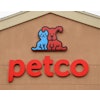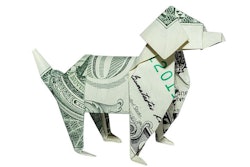
It’s become a popular cliché this year, the year like no other, to say that 2020 and the pandemic have put “X on steroids.” “X” can be just about anything, but e-commerce, including for pet food, definitely completes the equation well.
Writing on the growth of e-commerce for pet food and other pet products leading into 2020, Tom Elliott, managing director of investment firm Capstone Headwaters, said, “One of the driving factors behind the trend was the growth of millennial pet owners that were preconditioned to online shopping. The pandemic has taken this storyline and put it on steroids.”
In a new report from Capstone, “Pet Humanization Accelerates Through COVID-19,” Elliott added that it’s not just millennials shopping more online now; the shutting down of retailers has also pushed boomers to purchase more online. Even with pet retailers being deemed essential businesses fairly early in the crisis, many people have still preferred to stay home and shop online rather than risk being around others.
Huge e-commerce surge, pet food along for the ride
According to data from IBISWorld cited in the Capstone report, e-commerce sales overall reached a whopping US$211.5 billion in the U.S. in the second quarter of 2020, or 16.1% of total U.S. retail sales. Those amounts represent a 44.5% increase from the same quarter in 2019 and a 31.8% rise from the first quarter of 2020.
Pet food and other pet products have contributed about 10% of e-commerce sales, at around US$10 billion; IBISWorld projects that amount to hit US$15.5 billion by 2025, growing at a compound annual growth rate (CAGR) of 6.9% between now and then.
Actually, IBISWorld’s data might be too conservative, at least if you compare it to other figures on online pet product sales. For example, Packaged Facts projects e-commerce’s share of the U.S. pet products market to be at 27% by the end of 2020. Based on its projections of 2020 product sales (pet food and other products) reaching US$58.9 billion—US$39.3 billion for pet food and treats, and US$19.6 billion for other pet supplies—a 27% share for e-commerce would be US$15.9 billion this year already.
Projecting to 2024, Packaged Facts expects e-commerce to account for 34% of the U.S. pet market, or about US$24 billion. (Projected sales for pet food in 2024 are US$48.07 billion and US$22.74 for other pet products, a total of US$70.81 billion.)
Amazon and Chewy leading the way in pet e-commerce
Wherever pet e-commerce ends up in four or five years, it’s rocking along now, and the twin-headed 800-pound gorilla—Amazon and Chewy—is reaping its fair share of the rewards, according to Capstone, citing additional IBISWorld data. “Amazon has continued its impressive run in the pet space, and with the help of the pandemic, it has achieved 39% of total online pet food and supply market share in 2020,” Elliott said in the report.
Meanwhile, sales for Chewy, which recently split from owner PetSmart, rose 47% in the retailer’s fiscal year second quarter, according to its earnings report. That translates to about US$1.7 billion in that quarter alone.
According to a survey of U.S. pet owners conducted by Packaged Facts in August 2020, 79% of owners said they’re using the internet more, with 71% ordering and buying online more, 56% ordering/buying more with smartphone apps and 49% buying groceries online more. “Now, with the pandemic blasting into the equation, e-commerce has been fast-tracked to such a degree that virtually overnight, a robust online strategy has become a crucial component of pet market operations large and small,” wrote David Lummis, lead pet market analyst for Packaged Facts, in Pet Product News’ State of the Industry Report & Annual Buying Guide.
That’s certainly true for brick-and-mortar pet retailers, especially independent pet stores, though it’s also much more difficult for them to have the resources, financial and otherwise, to operate effective e-commerce sites. However, companies such as eTailPet and Franpos are providing assistance and turnkey programs, Lummis wrote. “In the age and wake of COVID-19, expect to see many more such ‘facilitators’ enter the field.”
E-commerce surges for pet food manufacturers, too
The need for a robust omnichannel strategy—with e-commerce playing a significant role—applies to pet food and product manufacturers, too. “It is increasingly clear that manufacturers of pet products that have not figured out how to harness the Amazon engine are falling further behind, and everyone needs to have a comprehensive online strategy to grow successfully in the current environment,” Elliott said.
It would seem many pet food companies already do. In Petfood Industry’s survey of pet food manufacturers conducted in April, 60% reported experiencing increased sales through online retailers. Granted, that was during the early lockdown-driven stocking up of pet food and many other essential household goods; but more recently, in our Petfood Industry Confidence Index surveys of pet food executives and other professionals, e-commerce has remained among the few bright spots as business confidence has lagged in other areas. (Watch for the latest report on the Confidence Index in the December issue of Petfood Industry.)
Bottom line: E-commerce will continue to grow and dominate pet food retail sales for some time. Any business not already on that bandwagon had best jump on very soon.
View our continuing coverage of the coronavirus/COVID-19 pandemic.


















